Few things illustrate the schism between built and graphic representation in architecture more profoundly than some down at heel deconstructivism.
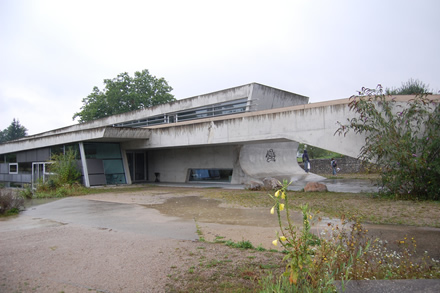
This image, posted by Flickr user 'thegoatisbad', of Zaha Hadid's Landscape Formation 1 (aka LF-1, LFOne and Landesgartenschau) at Weil am Rhein, has attracted a fair bit of attention in the rarified atmosphere of the architectural blogosphere. It causes Douglas Murphy over at ENTSCHWINDET UND VERGEHT 'problems'.
"it does bother me when this spatial language is just the unintended byproduct of some shitty acrylic paintings."
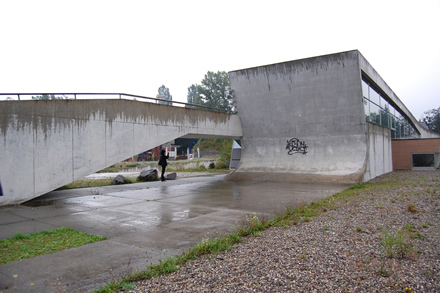
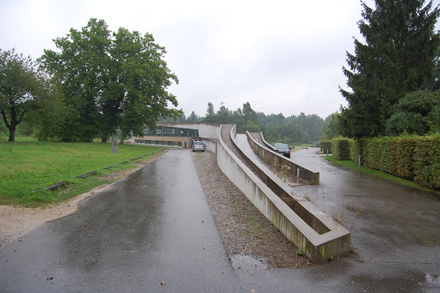
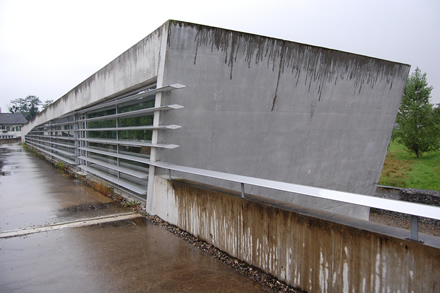
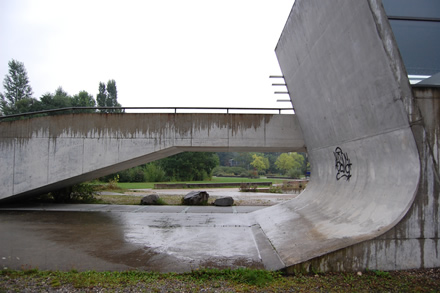
See more images from goatisbad's Flickr collection here.
It's a disturbing image because it gives the work a history, rather than existing in a kind of continuous Suprematist present. It also, inevitably shows the slippage that occurs between 2D architectural speculation (eg drawings, renderings, animations etc), and 3D built form.
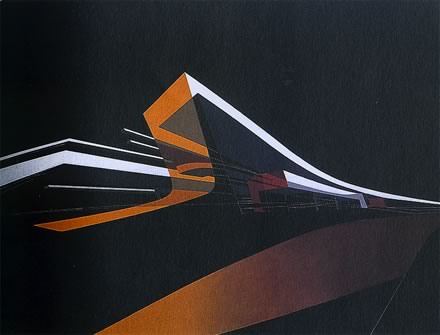
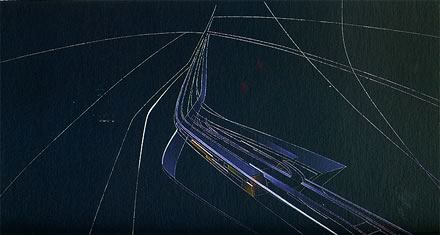
It also seems strange that a seminal early work (it even has a book dedicated solely to it) by such a celebrated architect as Zaha would have been let go to seed, seemingly unloved and uncared for, to such an extent, just 10 years after it was completed. A fuzzy, jerky video on YouTube tours the building and lingers over pitted concrete, stained walls, weed-ridden surrounds, and one solitary piece of graffiti.
Hadid's early built works are crude attempts to translate the language and energy of the drawings and paintings into buildings, often constructed cheaply and with little regard for detailing or longevity.
Only in more recent projects such as the Phaeno centre and the BMW Central Building is there an exploration and focus on the materiality of concrete. Conversely the drawings accompanying these projects are much more prosaic - one gets the impression that these buildings are not the result of a design process fuelled by wildly visionary drawings.
In the Source Books in Architecture on the BMW Central Building, Patrik Schumacher of ZHA calls the BMW Central Building a 'field project', and traces the lineage of it back to the LF1 building:
"BMW continues investigations begun in earlier projects such as the Contemporary Arts Center in Rome and the LF1 project in Weil am Rhein. Each of these projects deals with eh organization of a number of trajectories over different levels, with the complexity that arises from these trajectories crossing and intersecting, and with the spatial experience of moving through them."
But while LF-1 is pure composition turned into a building, a drawing made flesh, the BMW building (which was the winner of a competition) was always designed to get built. Its composition arises to fulfil programmatic functional requirements, on a tight, restrictive plot.
The series of drawings and computer renderings of the BMW central building, fascinating thhough they are, bear this out. Only a few characteristic squiggle sketches show any sense of 'artistic' rather than programmatic composition. There is much more concern about materials, textures and details.
BMW and Phaeno are buildings first, theoretical playgrounds second. Hadid certainly does concrete a lot better now. LF-1 was an architectonic composition that had the fortune (or misfortune) to get built. Desperate to avoid the epithet of being a "paper architect", most architects seek the legitimisation of having a project built.
Which leaves LF-1 as some kind of bastard offspring that no-one wants to know. Now windswept, graffitied, and with weeds poking through the terrain, it looks rather forlorn. How well it works as an operating building is unknown.
That LF-1 is now a landmark of 'accidental brutalism' might perhaps gives it a second act, as a posterchild of decon in decay.
